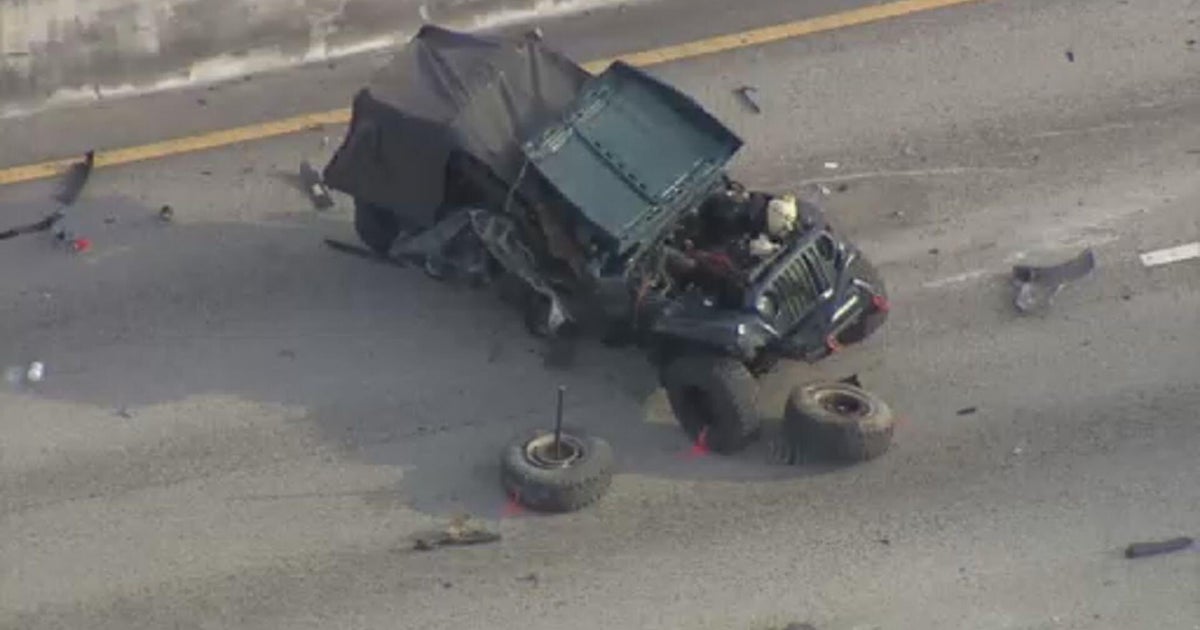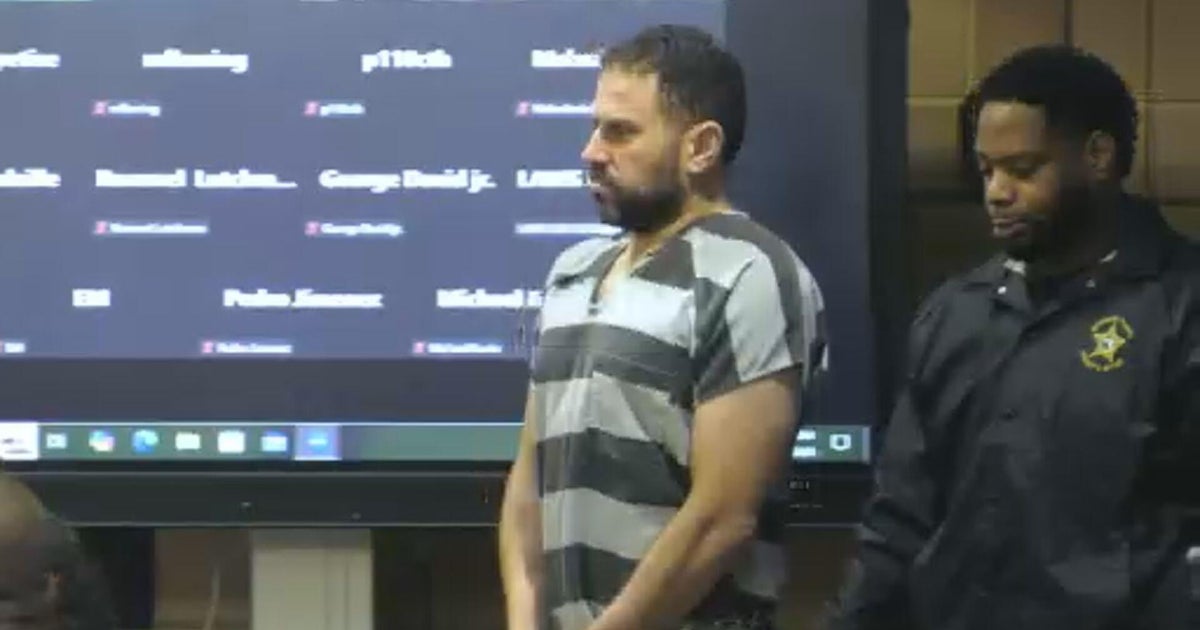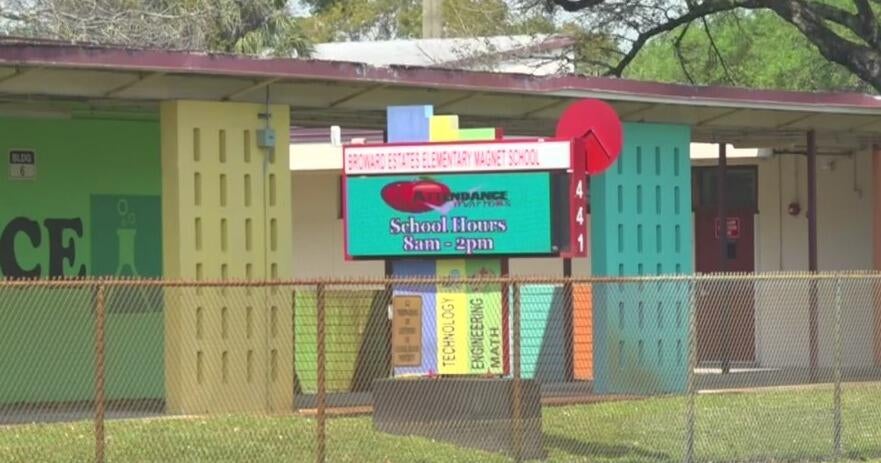Uvalde CISD school police chief Pete Arredondo defends Texas shooting response
**Puedes encontrar la versión en español al final del artículo**
AUSTIN, Texas (CBSDFW.COM/AP) — Many are criticizing chief of police for the Uvalde school district, Pete Arredondo, following his actions during the classroom shootings at Robb Elementary School on May 2.
In his first extensive comments since the incident where 19 children and two teachers were killed, Arredondo said he did not consider himself the person in charge as the massacre unfolded. He also said he assumed someone else had taken control of the law enforcement response.
Arredondo also told the Texas Tribune that he intentionally left behind both his police and campus radios before entering Robb Elementary School. He also described the classroom door as reinforced with a steel jamb that he couldn't kick in.
Poor radio communications is among the concerns raised about how police handled the shooting and why they didn't confront the gunman for more than an hour, even as anguished parents outside the school urged officers to go in.
Separately, The New York Times reported Thursday that documents show police waited for protective equipment as they delayed entering the campus, even as they became aware that some victims needed medical treatment.
Arredondo told the Tribune that from the hallway of the school he used his cell phone to call for tactical gear, a sniper and keys to get inside the classroom. He said he held back from the door for 40 minutes to avoid provoking gunfire and tried dozens of keys brought to him, but that, one-by-one, they failed to work.
"Each time I tried a key I was just praying," he told the Tribune.
In the more than two weeks since the shooting, Arredondo's actions have come under intensifying scrutiny from both state officials and experts trained in mass shooting responses. Steven McCraw, the head of the Texas Department of Public Safety, has said the school police chief, who he described as the incident commander, made the "wrong decision" to not order officers to breach the classroom more quickly to confront the gunman.
But Arredondo, who told the Tribune he believed that carrying radios would slow him down as he entered the school and that he knew that radios did not work in some school buildings, said he never considered himself the scene's incident commander and did not give any instruction that police should not attempt to breach the building.
"I didn't issue any orders," Arredondo said. "I called for assistance and asked for an extraction tool to open the door."
Arredondo has not responded to repeated interview requests and questions from The Associated Press.
His account and records obtained by the Times were published Thursday as law enforcement and state officials have struggled to present an accurate timeline and details. They have also made frequent corrections to previous statements, and no information about the police response has been formally released by investigators since the days that followed the attack.
According to documents obtained by the Times, a man who investigators believe to be Arredondo could be heard on body camera footage talking about how much time was passing.
"People are going to ask why we're taking so long," said the man, according to a transcript of officers' body camera footage obtained by the newspaper. "We're trying to preserve the rest of the life."
Sixty officers had assembled on the scene by the time four officers made entry, according to the report. The two classrooms where the shooting took place included 33 children and three teachers.
Not all the victims were found dead when officers finally went inside: one teacher died in an ambulance and three children died at nearby hospitals, according to the records obtained by the Times, which included a review of law enforcement documents and video that have been gathered as part of the investigation.
The family of Xavier Lopez, 10, said the boy had been shot in the back and lost a lot of blood as he waited for medical attention.
"He could have been saved," Leonard Sandoval, the boy's grandfather, told the newspaper. "The police did not go in for more than an hour. He bled out."
The records obtained by the Times offered other new details, including that the gunman, Salvador Ramos, had a "hellfire" trigger device meant to allow a semiautomatic AR-15-style rifle to be fired more like an automatic weapon, but did not appear to have used it during the attack. Ramos had spent more than $6,000 amassing an arsenal of weapons that included two AR-15-style rifles, accessories and hundreds of rounds of ammunition, according to the documents.
The Times reported that some of the officers who first arrived at the school had long guns, and that Arredondo learned the gunman's identity while inside the school and attempted to communicate with him through the closed classroom doors.
Eva Mireles, one of the teachers who was killed, made a phone call to her husband, a Uvalde school district police officer, during the attack. The documents obtained by the Times show that Ruben Ruiz informed responders on the scene that his wife was still alive in one of the classrooms.
"She says she is shot," Ruiz could be heard telling other officers as he arrived inside the school at 11:48 a.m., according to the body camera transcript obtained by the Times.
By 12:46 p.m., Arredondo seemed to give his approval for officers to enter the room, the Times reported.
"If y'all are ready to do it, you do it," he said, according to the transcript.
About a week after the shooting, department of public safety officials said Arredondo was no longer cooperating with the agency and had not responded to interview requests from the Texas Rangers, the agency's investigative unit.
Arredondo's attorney, George E. Hyde, told the Tribune for Thursday's story that Arredondo could not do an interview on the day the Rangers asked because he was covering shifts for his officers. Hyde said Arredondo is willing to cooperate with the Rangers investigation but would like to see a transcript of his previous comments.
"That's a fair thing to ask for before he has to then discuss it again because, as time goes by, all the information that he hears, it's hard to keep straight," Hyde said.
----------------------------------------------------------------------------------------------------------------------------------------------------------------
AUSTIN, Texas (CBSDFW.COM/AP) — Muchos critican al jefe de policía del distrito escolar de Uvalde, Pete Arredondo, luego de sus acciones durante los tiroteos en el aula de la Escuela Primaria Robb el 2 de mayo.
En sus primeros comentarios extensos desde el incidente en el que murieron 19 niños y dos maestros, Arredondo dijo que no se consideraba el responsable de la masacre. También dijo que asumió que alguien más había tomado el control de la respuesta policial.
Arredondo también le dijo al Texas Tribune que intencionalmente dejó atrás las radios de la policía y del campus antes de ingresar a la Escuela Primaria Robb. También describió que la puerta del salón de clases estaba reforzada con una jamba de acero que no podía patear.
La mala comunicación por radio es una de las preocupaciones planteadas sobre cómo la policía manejó el tiroteo y por qué no confrontaron al pistolero durante más de una hora, incluso cuando los padres angustiados afuera de la escuela instaron a los oficiales a entrar.
Por separado, The New York Times informó el jueves que los documentos muestran que la policía esperó el equipo de protección mientras se demoraban en ingresar al campus, incluso cuando se dieron cuenta de que algunas víctimas necesitaban tratamiento médico.
Arredondo le dijo al Tribune que desde el pasillo de la escuela usó su teléfono celular para pedir equipo táctico, un francotirador y llaves para ingresar al salón de clases. Dijo que se mantuvo alejado de la puerta durante 40 minutos para evitar los disparos y probó con docenas de llaves que le trajeron, pero que, una por una, no funcionaron.
"Cada vez que probé una llave, solo estaba rezando", le dijo al Tribune.
En las más de dos semanas desde el tiroteo, las acciones de Arredondo han estado bajo un escrutinio cada vez más intenso por parte de funcionarios estatales y expertos capacitados en respuestas a tiroteos masivos. Steven McCraw, jefe del Departamento de Seguridad Pública de Texas, dijo que el jefe de policía de la escuela, a quien describió como el comandante del incidente, tomó la "decisión equivocada" de no ordenar a los agentes que irrumpieran en el salón de clases más rápidamente para confrontar al atacante.
Pero Arredondo, quien le dijo al Tribune que creía que llevar radios lo retrasaría al entrar a la escuela y que sabía que las radios no funcionaban en algunos edificios escolares, dijo que nunca se consideró el comandante del incidente de la escena y no dio ninguna instrucción. que la policía no debe intentar violar el edificio.
"No di ninguna orden", dijo Arredondo. "Pedí ayuda y pedí una herramienta de extracción para abrir la puerta".
Arredondo no ha respondido a las repetidas solicitudes de entrevistas y preguntas de The Associated Press.
Su cuenta y los registros obtenidos por el Times se publicaron el jueves, ya que las fuerzas del orden y los funcionarios estatales han tenido problemas para presentar una cronología y detalles precisos. También han hecho correcciones frecuentes a declaraciones anteriores, y los investigadores no han publicado formalmente información sobre la respuesta de la policía desde los días posteriores al ataque.
Según los documentos obtenidos por el Times, se podía escuchar a un hombre que los investigadores creen que es Arredondo en las imágenes de la cámara corporal hablando sobre cuánto tiempo estaba pasando.
"La gente preguntará por qué tardamos tanto", dijo el hombre, según una transcripción de las imágenes de la cámara corporal de los oficiales obtenida por el periódico. "Estamos tratando de preservar el resto de la vida".
Sesenta oficiales se habían reunido en la escena cuando cuatro oficiales ingresaron, según el informe. Las dos aulas donde ocurrió el tiroteo incluían a 33 niños y tres maestros.
No todas las víctimas fueron encontradas muertas cuando los oficiales finalmente entraron: un maestro murió en una ambulancia y tres niños murieron en hospitales cercanos, según los registros obtenidos por el Times, que incluyeron una revisión de documentos policiales y videos que se han recopilado. como parte de la investigación.
La familia de Xavier López, de 10 años, dijo que el niño recibió un disparo en la espalda y perdió mucha sangre mientras esperaba atención médica.
"Podría haberse salvado", dijo al periódico Leonard Sandoval, el abuelo del niño. "La policía no entró durante más de una hora. Se desangró".
Los registros obtenidos por el Times ofrecieron otros detalles nuevos, incluido que el pistolero, Salvador Ramos, tenía un dispositivo disparador de "fuego infernal" destinado a permitir disparar un rifle semiautomático estilo AR-15 más como un arma automática, pero no apareció. haberlo usado durante el ataque. Ramos había gastado más de $6,000 acumulando un arsenal de armas que incluía dos rifles estilo AR-15, accesorios y cientos de municiones, según los documentos.
The Times informó que algunos de los oficiales que llegaron por primera vez a la escuela tenían armas largas y que Arredondo se enteró de la identidad del pistolero mientras estaba dentro de la escuela e intentó comunicarse con él a través de las puertas cerradas del salón de clases.
Eva Mireles, una de las maestras asesinadas, llamó por teléfono a su esposo, policía del distrito escolar de Uvalde, durante el ataque. Los documentos obtenidos por el Times muestran que Rubén Ruiz informó a los que respondieron en la escena que su esposa todavía estaba viva en una de las aulas.
"Ella dice que le dispararon", se podía escuchar a Ruiz decirle a otros oficiales cuando llegó a la escuela a las 11:48 a.m., según la transcripción de la cámara corporal obtenida por el Times.
A las 12:46 p.m., Arredondo pareció dar su aprobación para que los oficiales ingresaran a la habitación, informó el Times.
"Si están listos para hacerlo, háganlo", dijo, según la transcripción.
Aproximadamente una semana después del tiroteo, los funcionarios del departamento de seguridad pública dijeron que Arredondo ya no cooperaba con la agencia y no había respondido a las solicitudes de entrevista de los Texas Rangers, la unidad de investigación de la agencia.
El abogado de Arredondo, George E. Hyde, le dijo al Tribune para la historia del jueves que Arredondo no pudo hacer una entrevista el día que los Rangers lo pidieron porque estaba cubriendo los turnos de sus oficiales. Hyde dijo que Arredondo está dispuesto a cooperar con la investigación de los Rangers, pero que le gustaría ver una transcripción de sus comentarios anteriores.
"Es justo pedir eso antes de que tenga que volver a discutirlo porque, a medida que pasa el tiempo, toda la información que escucha es difícil de entender", dijo Hyde.



